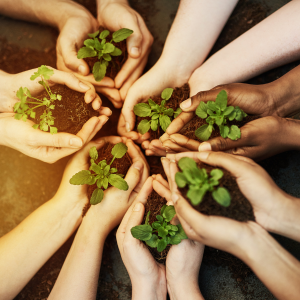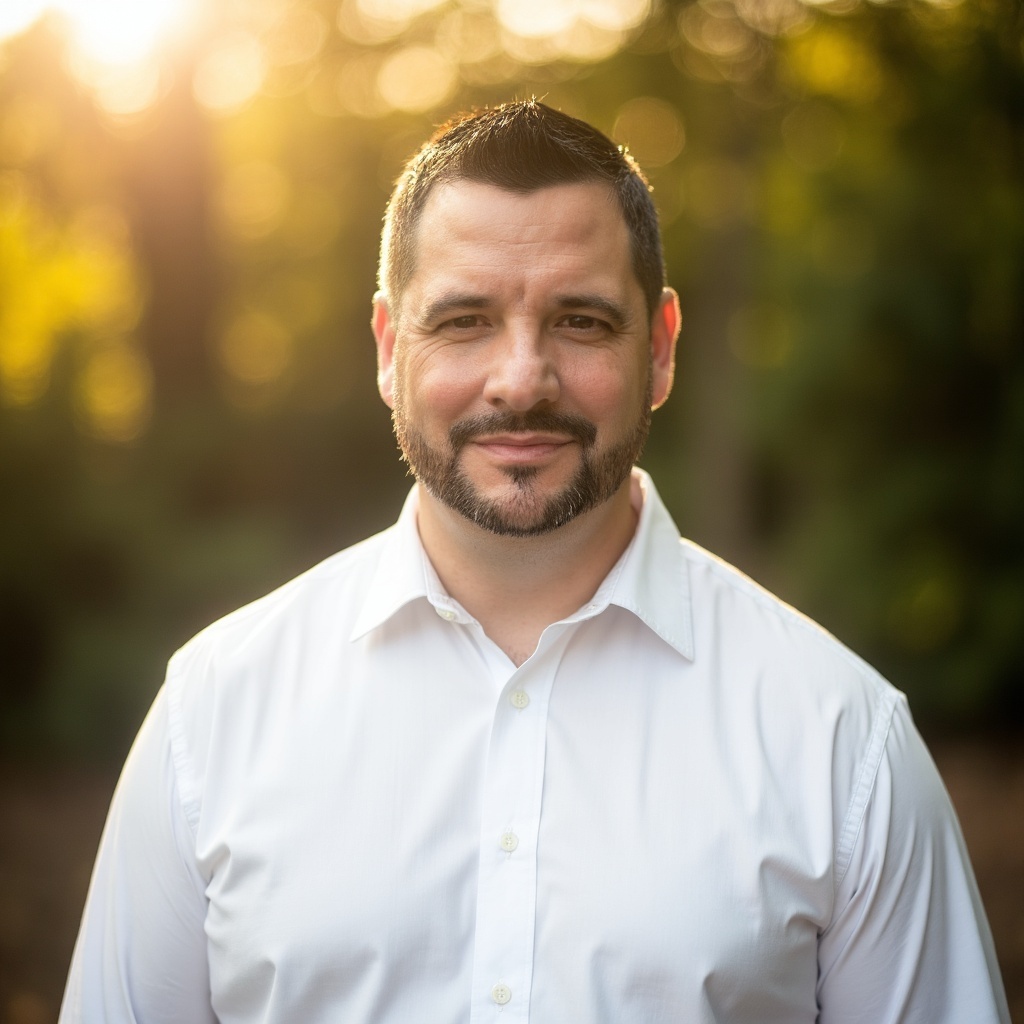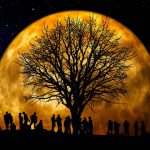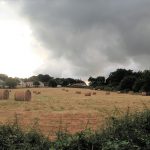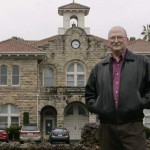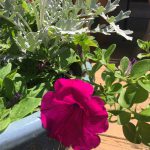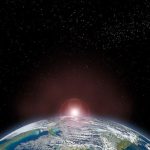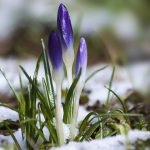Friday
A World Built on Pain: The Call for Healing and Change
By George Cassidy Payne
We live in a world where systems of power and dominance are designed to destroy the very planet that sustains us. These systems, though old in origin, have become more visible than ever before. They are built on extraction, exploitation, and a blind pursuit of progress that disregards the balance of life on Earth. Mother Earth is suffering under the weight of human-made unsustainable practices.
As Thich Nhat Hanh, a renowned teacher of peace and mindfulness, has often said, our connection to the Earth is not some abstract concept but something profound and immediate. To love the Earth is to love ourselves because we are intricately woven into the fabric of life. Yet, despite this deep connection, the structures of our society continue to foster destruction. Economic systems prioritize growth, accumulation, and exploitation, often at the cost of the environment and all of its creatures. The question we must ask is: where does this path lead us? Will our desire for control and comfort continue to erode the very systems upon which we depend?
Civilization, as we know it, is unsustainable. The rise of agriculture over 10,000 years ago marked the beginning of a trajectory where humanity’s relationship with nature became one of domination. We have seen entire species wiped out and ecosystems decimated. Today, 90% of fish populations are depleted, and 80% of old-growth forests have been destroyed. This is the legacy of human progress. We’ve created systems that exploit nature, driven by a desire to conquer and control. But at what cost?
The violence inflicted upon the Earth is not just physical; it’s linguistic and ideological. The discourse surrounding nature and sustainability has been shaped by political and economic forces that treat the natural world as something to be harvested, not a living community to be nurtured. We are not separate from nature; we are part of it. Yet, in our arrogance, we act as though we are above it, consuming without consequence. The truth is clear: without nature, we cease to exist. The buffalo skulls scattered across the Plains are a haunting reminder of what happens when we push too far, too fast, and too greedily.
Our ego has placed itself in direct opposition to the ecological system that sustains all life. The needs of nature must come before the needs of economic systems, but we continue to prioritize growth over balance, and consumption over care. This is a profound injustice — not only to the Earth but to all the creatures that depend on her.
We are dealing with pathological systems — economic, political, and social structures that are broken and destructive by design. These systems perpetuate ecological collapse, social inequality, and environmental degradation. The damage they cause is not an accident; it is the logical outcome of the values that drive them. These are not systems that can be tweaked or reformed; they need to be re-envisioned.
To create a world that is just and sustainable, we must re-imagine power, ecology, and healing. This requires a radical shift — a transformation in how we relate to one another, the Earth, and ourselves.
Reenvisioning Power
Power, as we know it, is often associated with domination, control, and exploitation. We see this in the way political, economic, and social structures perpetuate inequality and environmental harm. These hierarchies place certain groups — usually those with wealth and technological advantage — above others, including the natural world.
True power lies in interconnection, reciprocity, and mutual respect. It arises when we recognize our interconnectedness with all life. Gandhi’s principle of non-cooperation with everything humiliating points us toward an alternative vision of power — one that does not dominate or subjugate but works in harmony with the Earth and one another. Power, in this sense, is not something to be hoarded or controlled. It’s something to be shared, cultivated, and used responsibly for the collective well-being of all.
Reenvisioning Ecology
Ecology, in its current treatment, is often viewed through a narrow lens: nature as something to be exploited, commodified, and used for human gain. We speak of nature as “resources” to be extracted, “capital” to be managed. This extractive relationship has brought us to the brink of ecological collapse — biodiversity loss, deforestation, ocean acidification, and climate change are just a few of the destructive forces at play.
A new ecological vision is required — one that sees nature not as a separate entity to be controlled but as a living, breathing community with which we share space. It’s a worldview that recognizes the sacredness of all life and understands that human flourishing is tied to the health of ecosystems. In this vision, our relationship with the Earth becomes one of stewardship, reciprocity, and respect, grounded in the understanding that the health of the planet directly influences the well-being of all species, including ourselves.
To heal the planet, we must move beyond the extractive model of exploitation and embrace a more holistic, regenerative approach that centers on sustainability, biodiversity, and the restoration of natural cycles.
Reenvisioning Healing
Healing is often seen as a personal journey — a process of mending broken bodies or minds. But true healing extends beyond the individual. It encompasses communities, ecosystems, and the Earth itself. Healing involves confronting the deep wounds caused by centuries of exploitation, oppression, and violence. It requires reconciliation — not just between people but between humanity and the Earth.
Healing begins by acknowledging the trauma caused by our systems — systems that perpetuate environmental destruction, social inequality, and violence. It involves the work of repair, restoration, and regeneration. Just as individuals must heal from their wounds, societies and ecosystems must heal from the violence of extraction, colonization, and environmental degradation.
This process must also be inclusive, recognizing the voices and needs of marginalized communities — whose struggles are often intertwined with the environmental crisis. Communities of color, indigenous peoples, and low-income populations bear the brunt of both social injustice and ecological harm. Their healing is integral to the broader healing of the world.
The Power of Music and Local Action
One of the most powerful tools in this journey toward a nonviolent world is music. Music transcends barriers and speaks directly to the heart. In the fight for social and ecological justice, music serves as a powerful tool for expression, healing, and resistance. We must give voice to those whose stories have been silenced by the dominant narrative of violence and exploitation. Music becomes an act of resistance, a means of resisting the forces that seek to divide us and disconnect us from one another and the Earth.
However, music alone is not enough. We must also recognize the importance of local action. While large-scale movements are necessary, it’s the everyday actions, rooted in communities and local networks, that lay the foundation for lasting transformation. These small, collective actions have the potential to create a ripple effect — a nonviolent contagion that spreads from the grassroots to the global.
Challenging the Myth of Military Effectiveness
One of the most enduring myths that sustain these destructive systems is the myth of military effectiveness — the belief that military power is the ultimate means of achieving peace and security. But the truth is, that violence breeds more violence, and military solutions often exacerbate the very crises they are meant to resolve. Revolution does not always have to be violent. We can challenge this myth by demonstrating alternative forms of power — forms grounded in nonviolence, compassion, and cooperation.
True power, as Hannah Arendt wisely observed, is not violence; it is the ability to act in concert with others toward a common goal. Power lies in collective action, solidarity, and the strength of a community united in nonviolent resistance.
Contemporary Faith-Based Activism
Faith-based activism offers another lens through which to view the transformative potential of nonviolence. Rooted in compassion, justice, and a deep sense of moral responsibility, faith-based movements have often been at the forefront of social change. From the civil rights movement to climate justice, faith communities have played a crucial role in challenging injustice and advocating for a more sustainable world.
As we work to build a nonviolent, sustainable future, we must look to these faith-based activists who are mapping a nonviolent contagion — a global network of compassion, justice, and solidarity. This movement is grounded in the belief that true peace can only be achieved when all beings are respected and honored.
Conclusion
We stand at a critical moment in human history. The systems that govern our lives are broken, and the Earth cries out for healing. The path we take now will determine the future of our planet and all the life it sustains. The time for change is now. But this change must come from within. We must act out of love — for the Earth, for one another, and future generations. Only through radical transformation — grounded in nonviolence, respect for nature, and collective action — will we begin to heal the world and ourselves.
The change we need cannot come from the same systems that created the problem. We must, as Gandhi said, “be the change we wish to see in the world.”
***
George Cassidy Payne is a writer, philosopher, and advocate based in Rochester, NY. His work delves into themes of spirituality, social justice, philosophy, and the human condition. Known for his introspective essays, evocative poetry, and thought-provoking commentary, George contributes to various publications and platforms, offering a distinctive perspective on contemporary issues and timeless questions. He lives and works as a counselor in Irondequoit, NY.
Entries filed under Opinion Pieces
A Tendency to Tamper – HIGHLIGHT
Reflections on our left-brain approach to everyday life and the nature of reality by Larry Barnett My seven-year-old granddaughter and I were watching an animated movie about a curious fairy who is told by her Fairy Master not to tamper with Pixie Dust. She does, of course, and ... continuePosted September 12, 2017 by CGH
Thinking…. – HIGHLIGHT
Some thoughts on research and problem solving by Susan Firer When I was in school I loved to do research; I found it very satisfying in many ways. When I got out of school I didn’t seem to have the time for research. Or, maybe it was because ... continuePosted August 17, 2017 by CGH
The Pathology of Happiness – HIGHLIGHT
A closer look at cultural conceptions related to happiness and contentment by Larry Barnett When an idea, an object, a substance, or an emotion preoccupies consciousness to the near exclusion of anything else, we call it an obsession. And when an obsession becomes a compulsion so powerful as ... continuePosted August 3, 2017 by CGH
The Experience of Awe – HIGHLIGHT
How awe is connected to using our senses, and to living as an inspired human being by Shastri Donna Williams I’ve been studying contemplative ecology recently, that juncture where our senses contact the natural world and expand, where we can relax–experiencing connection, health and balance. While reading True Perception: ... continuePosted August 1, 2017 by CGH
Politics is Internal – HIGHLIGHT
A reprint of an article that first appeared in 2013, examining politics as practice by Larry Barnett There is a yogic practice in Tibet that takes place in a charnel ground, or what we call a graveyard. Graveyards in Tibet, which is mostly rock, are not the neat ... continuePosted July 24, 2017 by CGH
Becoming a Better Listener – HIGHLIGHT
A few good reasons to practice mindful listening in our everyday lives by Jackie Edwards Every day, people struggle to be heard and understood. Whether it’s in our home or at work, the desire to be heard is such that it has become common practice to speak forcefully, ... continuePosted July 6, 2017 by CGH
Bright Flowers of June – HIGHLIGHT
Appreciating the richness and beauty of an early summer garden by Carol Henderson In such a hurry today — scrambling to meet publication deadlines, sending out minutes from a board meeting, and getting packed for a week’s travel, plus the usual household tasks of cooking, dishes, laundry. As ... continuePosted June 14, 2017 by CGH
Meditation in Your World – HIGHLIGHT
Experiencing the power of meditation to change our everyday lives by Susan Firer I thought I’d start with some words from The Shambhala Principle, a book written by my teacher, Sakyong Mipham. The chapter titled “Shifting Global Values” starts off with the Sakyong talking about the day his ... continuePosted May 25, 2017 by CGH
Old Age and The Path – HIGHLIGHT
by Han de Wit “…freeing oneself from how we used to feel about our practice as it has been defined by our lineage, that is, as defined from the outside, we can and hopefully will be able to redefine our practice from the inside.” Somewhere in ‘Born in ... continuePosted April 15, 2017 by CGH
Climate March Aspirations – HIGHLIGHT
Why I’m joining the People’s Climate Mobilization on April 29, and why I hope you will too by Mark Rasmuson What ecological challenges we face! Just in the past month, we’ve seen a U.S. EPA administrator sworn into office who denies basic climate science, the “sheer reckless folly” of Trump’s executive ... continuePosted April 7, 2017 by CGH
Out of Darkness Into Light – HIGHLIGHT
As we mark the equinox this week, a northerner reflects on winter and the first days of spring by Nyingje Sheltri My strawberry plants arrived in the mail yesterday. My husband and I opened the “mystery” box together, having forgotten what we had ordered back in December. When ... continuePosted March 24, 2017 by CGH
The Myth of Disconnection – HIGHLIGHT
Have we bought into the destructive myth of disconnection? Look inside yourself and be honest. by Sarah Lipton Listening to the news lately makes me think that our society believes in a rampant myth of disconnection. We believe so strongly that the “other” is bad, scary, no good, ... continuePosted March 17, 2017 by CGH
Letter of Affirmation – HIGHLIGHT
An open letter from leaders of the Northern California Shambhala community, sharing a statement about recent events. Through studying the Shambhala teachings, we learn that humanity and human society as basically good. Through the practice of meditation, we can experience that basic goodness, gain confidence in it, ... continuePosted February 9, 2017 by CGH
Accelerating Change – HIGHLIGHT
Seeing confusion as an opportunity for positive change by Kim Kelso Thinking about the results of the presidential election at first filled me with disappointment, dread, and fear. As the weeks unfolded, I was tempted to be forlorn. Yet I knew from my Shambhala teachings that ignoring or ... continuePosted January 28, 2017 by CGH
Basic Goodness and Original Sin – HIGHLIGHT
A theologian explores the relationship of two concepts key to Shambhala and Christian teachings by Steven Shippee In Shambhala, the view of basic goodness is sometimes sharply contrasted with the Christian doctrine of original sin. The purpose seemingly is to highlight how much the view of basic goodness ... continuePosted December 19, 2016 by Steven
![]() RSS feed for the Opinion Pieces category
RSS feed for the Opinion Pieces category
View all posts from authors in Opinion Pieces: jillian_johnson



